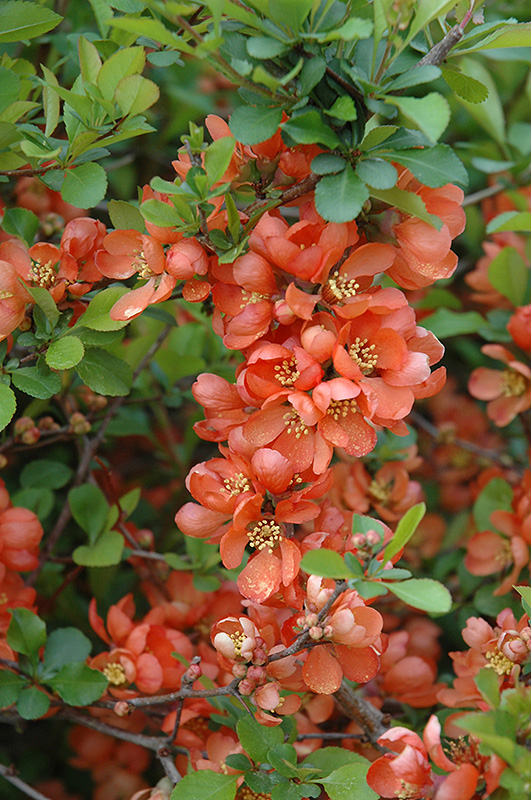Japanese Flowering Quince
Chaenomeles japonica
Height: 3 feet
Spread: 4 feet
Sunlight:
![]()
Hardiness Zone: 6a
Description:
Quite the paradox in the landscape; hot scarlet to fiery red flowers cover the branches in spring, but after that recedes to the barkground with limited ornamental qualities; best used in the garden or as a low barrier, needs frequent pruning
Ornamental Features
Japanese Flowering Quince has scarlet cup-shaped flowers along the branches in early spring before the leaves. It has dark green deciduous foliage. The glossy oval leaves do not develop any appreciable fall colour. The fruits are showy yellow pomes displayed in mid fall. The fruit can be messy if allowed to drop on the lawn or walkways, and may require occasional clean-up.
This plant is primarily grown as an ornamental, but it's also valued for its edible qualities. The bitter fruit is most often used in the following ways:
- Preserves
Landscape Attributes
Japanese Flowering Quince is a multi-stemmed deciduous shrub with a ground-hugging habit of growth. Its relatively coarse texture can be used to stand it apart from other landscape plants with finer foliage.
This is a high maintenance shrub that will require regular care and upkeep, and should only be pruned after flowering to avoid removing any of the current season's flowers. Gardeners should be aware of the following characteristic(s) that may warrant special consideration;
- Messy
- Spiny
Japanese Flowering Quince is recommended for the following landscape applications;
- Mass Planting
- Hedges/Screening
- General Garden Use
Planting & Growing
Japanese Flowering Quince will grow to be about 3 feet tall at maturity, with a spread of 4 feet. It tends to fill out right to the ground and therefore doesn't necessarily require facer plants in front. It grows at a medium rate, and under ideal conditions can be expected to live for 40 years or more.
This shrub should only be grown in full sunlight. It is very adaptable to both dry and moist locations, and should do just fine under typical garden conditions. It is not particular as to soil type or pH. It is highly tolerant of urban pollution and will even thrive in inner city environments. This species is not originally from North America.



